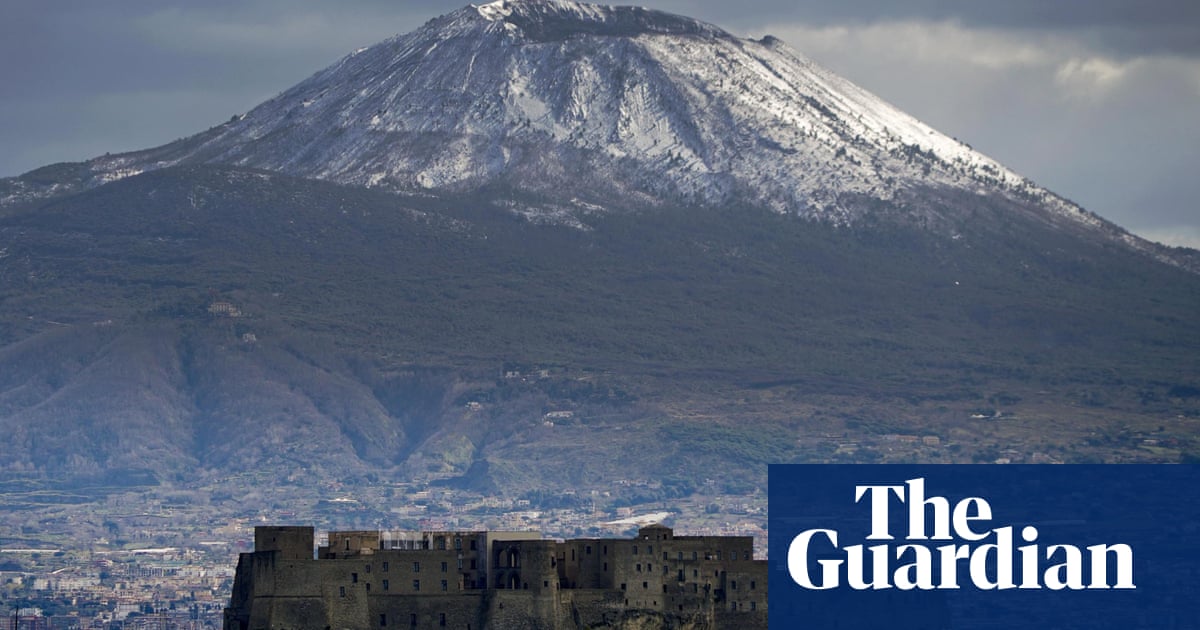John Brewer’s review of “Volcanic: Vesuvius in the Age of Revolutions” offers a seismic look at the social history surrounding Mount Vesuvius.

I
In December of 1818, the poet Shelley, accompanied by his wife Mary and stepsister-in-law Claire Clairmont, ascended Vesuvius. They began their journey in the village of Resina (now Ercolano) and made a stop at the hermitage of San Salvador, where an elderly hermit offered them refreshments. In a letter to Thomas Love Peacock, Shelley described the climb to the cone as “much less difficult than it has been portrayed.” Upon reaching the summit, he was struck with awe at the “horrifying chaos” and “terrifying crevices” created by the “fountains of molten lava.” The image of a passionate poet facing the true essence of the sublime is often seen as the epitome of Romanticism.
John Brewer’s captivating account of social history presents a contrasting perspective. By the early 19th century, reaching the top of Mount Vesuvius was no longer a daring spiritual journey, but rather a well-organized tourist experience. Although the volcano attracted visitors from all over Europe and the Americas, it also served as a hub for scientific and artistic pursuits. Friendships and professional alliances were formed in its presence, and reputations were made and challenged. While not as impressive as Mount Etna, Mount Vesuvius was more easily accessible and served as a muse for paintings, poems, and novels during the Romantic era and beyond. In addition to well-known individuals, many lesser-known figures also ventured to the summit, braving the heat and indulging in excessive drinking. It is these overlooked individuals that Brewer resurrects in his work.
The basis of his account relies on the fortunate preservation of a guestbook from the years 1826-8. Within its pages, one can find a variety of inscriptions, ranging from humorous to moralistic to mundane, that provide insight into the personalities and motivations of those who made the journey. However, with only 2,300 signatures, this is not a complete record; women were rarely included and guides and servants never signed. Alongside princes, aristocrats, bankers, doctors, diplomats, tradesmen, and clergy, the largest group of visitors, as Brewer discovers, were military personnel. The Swiss mercenaries, who were responsible for maintaining peace for the Bourbon rulers of Naples, were particularly fond of taking on challenging excursions.
At the beginning, the locals were in charge of the experience; a significant section is dedicated to the often overlooked guides who played a crucial role. The place Shelley made a stop at, known as a “hermitage”, was actually a popular café and gift shop selling souvenirs, and its occupant was more of an ornamental hermit than a religious figure. The majority of visitors listed in the guestbook were British, French, and Italian, and Vesuvius served as a focal point for national animosities during a time of political turmoil. The English, in particular, were disliked for their stinginess and isolationism, with one (English) writer stating, “Our arrogance is constantly complained about.”
The story features the British diplomat Sir William Hamilton, who was married to Nelson’s beloved Emma. Alongside Hamilton, another intriguing character in the story is the French aristocrat and scientist Déodat de Dolomieu, who is known for giving his name to the Italian Dolomites. His romantic adventures may have served as inspiration for the character of Vicomte de Valmont in Les Liaisons Dangereuses, written by his friend Pierre Choderlos de Laclos. Born in 1750, Dolomieu had already killed a man in a duel by the age of 18 and preferred traveling around Europe in search of volcanoes over his duties as a Knight of Malta. Despite his charm and connections, he ultimately fell victim to political violence during the French Revolution, causing his once blond hair to turn completely white. This is just one of the many extraordinary stories featured in the book.
Vesuvius represented a chance for onlookers to confront geological time, but change was coming to the mountain. Towards the end of the period Brewer covers, the advent of Thomas Cook, a paved road and a funicular railway spelled financial doom for the guides and their families. The political upheavals of preunification Italy alone make for a fascinating and complex story, reflected by the mountain, itself an icon of destruction and renewal. After all, from rich volcanic soil springs new growth.
Ignore the newsletter advertisement.
after newsletter promotion
Source: theguardian.com



